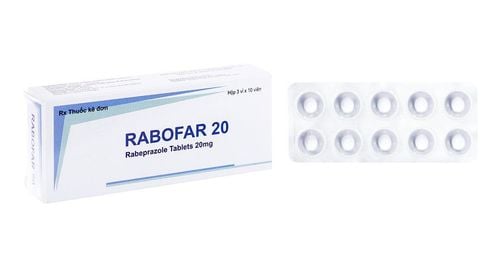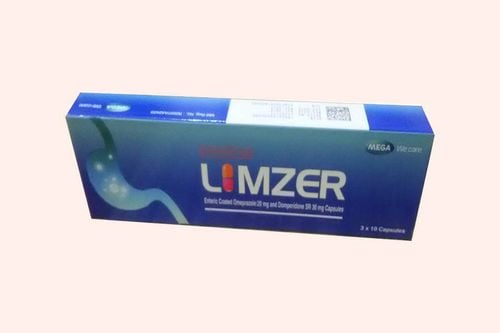This is an automatically translated article.
Lordin belongs to the group of gastrointestinal drugs with the main ingredient Omeprazole. It is commonly used in the treatment of peptic ulcer disease, gastroesophageal reflux disease (GERD) or indigestion.1. What is Lordin?
Omeprazole is a specific inhibitor with the mechanism of disabling the enzyme system of hydrogen-potassium adenosine triphosphatase, also known as the proton pump H+- K+- ATPase of gastric parietal cells. Lordin drugs act on the last stage of acid secretion to quickly inhibit the secretion of gastric juice due to any stimulus. Omeprazole has no effect on acetylcholine or histamine receptors and has no significant pharmacokinetic effects other than on acid secretion. Omeprazole causes a long-term but reversible decrease in gastric acid, 5 days after discontinuation of the drug, gastric secretion returns to normal but no increase in acid secretion. Lordin is usually indicated in the following cases:Gastroesophageal reflux with esophagitis and/or severe reflux symptoms; Treatment of stomach ulcers caused by the use of non-steroidal anti-inflammatory drugs (NSAIDs); Prophylaxis of NSAID-induced peptic ulcers in patients at risk. Contraindications of Lordin drug:
Patients with hypersensitivity to any component of Lordin Do not take concomitantly with Protease inhibitor antiretroviral drugs (HIV treatment) such as Atazanavir, Nelfinavir, Saquinavir,...
2. Dosage of Lordin
Lordin is available as a dry powder for injection and is indicated as an alternative therapy when oral administration is not appropriate. Depending on the treatment goal, the dose of Lordin will be different, specifically as follows:For Lordin infusion:
Solution for injection is injected intravenously for at least 3 minutes; Reconstituted solution do not mix or share the kit with other drugs; The drug solution should be used within 12 hours of reconstitution and preferably immediately after reconstitution for microbiological assurance. For Lordin infusion:
Reconstituted solution should be used within 12 hours after reconstitution and preferably immediately after reconstitution to ensure microbiology; Half volume of reconstitution should be used if only 20 mg of esomeprazole is required, the unused portion of solution should be discarded. Dosage:
Treatment of severe gastroesophageal reflux disease: 40mg x 1 time/day; Treatment of symptomatic reflux without esophagitis: 20mg x 1 time/day.
3. Lordin's side effects
In some patients when using Lordin, side effects may occur such as:
Digestive disorders: Nausea, diarrhea; Itching, dermatitis, dry mouth; Angioedema, anaphylactic reactions or elevated liver enzymes; Dizziness, drowsiness, paresthesia; Gynecomastia; Stomatitis and candidiasis ; Erythema multiforme photosensitivity, Steven-Johnson syndrome, alopecia; Peripheral edema; Blurred vision.
4. Be careful when using Lordin
Some general notes when using Lordin include:
Before taking proton pump inhibitors, the possibility of stomach cancer must be excluded because it can increase the risk of masking symptoms and delay diagnosis; Use caution when using Lordin in patients with liver disease, do not use more than 20mg/day in people with severe liver failure; Esomeprazole should be used with caution for a long time because it may cause atrophic gastritis. Lordin should be used with caution in children under 18 years of age because safety has not yet been established; Not recommended for use by pregnant and lactating women; Lordin drug can increase the concentration of the following drugs when used together: tranquilizers Diazepam, anticonvulsants, epilepsy Phenytoin, anticoagulant Warfarin . The article has provided information about what Lordin is, dosage and note when using. To ensure safety for your health and maximize the effectiveness of your treatment, you need to take Lordin exactly as directed by your doctor.
Please dial HOTLINE for more information or register for an appointment HERE. Download MyVinmec app to make appointments faster and to manage your bookings easily.













